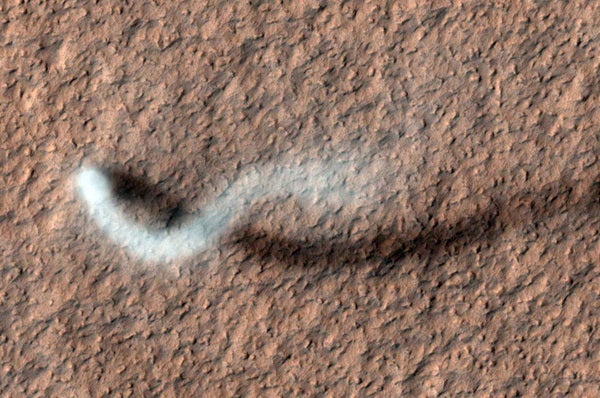Dust devils occur on Earth as well as on Mars. They are spinning columns of air, made visible by the dust they pull off the ground. Unlike a tornado, a dust devil typically forms on a clear day when the ground is heated by the Sun, warming the air just above the ground. As heated air near the surface rises quickly through a small pocket of cooler air above it, the air may begin to rotate, if conditions are just right.
The image was taken during late northern spring, two weeks short of the northern summer solstice, a time when the ground in the northern mid-latitudes is being heated most strongly by the Sun.
The MRO has been examining the Red Planet with six science instruments since 2006. Now in an extended mission, the orbiter continues to provide insights into the planet’s ancient environments and how processes such as wind, meteorite impacts, and seasonal frosts continue to affect the martian surface today. This mission has returned more data about Mars than all other orbital and surface missions combined.
More than 21,700 images taken by HiRISE are available for viewing on the instrument team’s website. Each observation by this telescopic camera covers several square miles and can reveal features as small as a desk.










